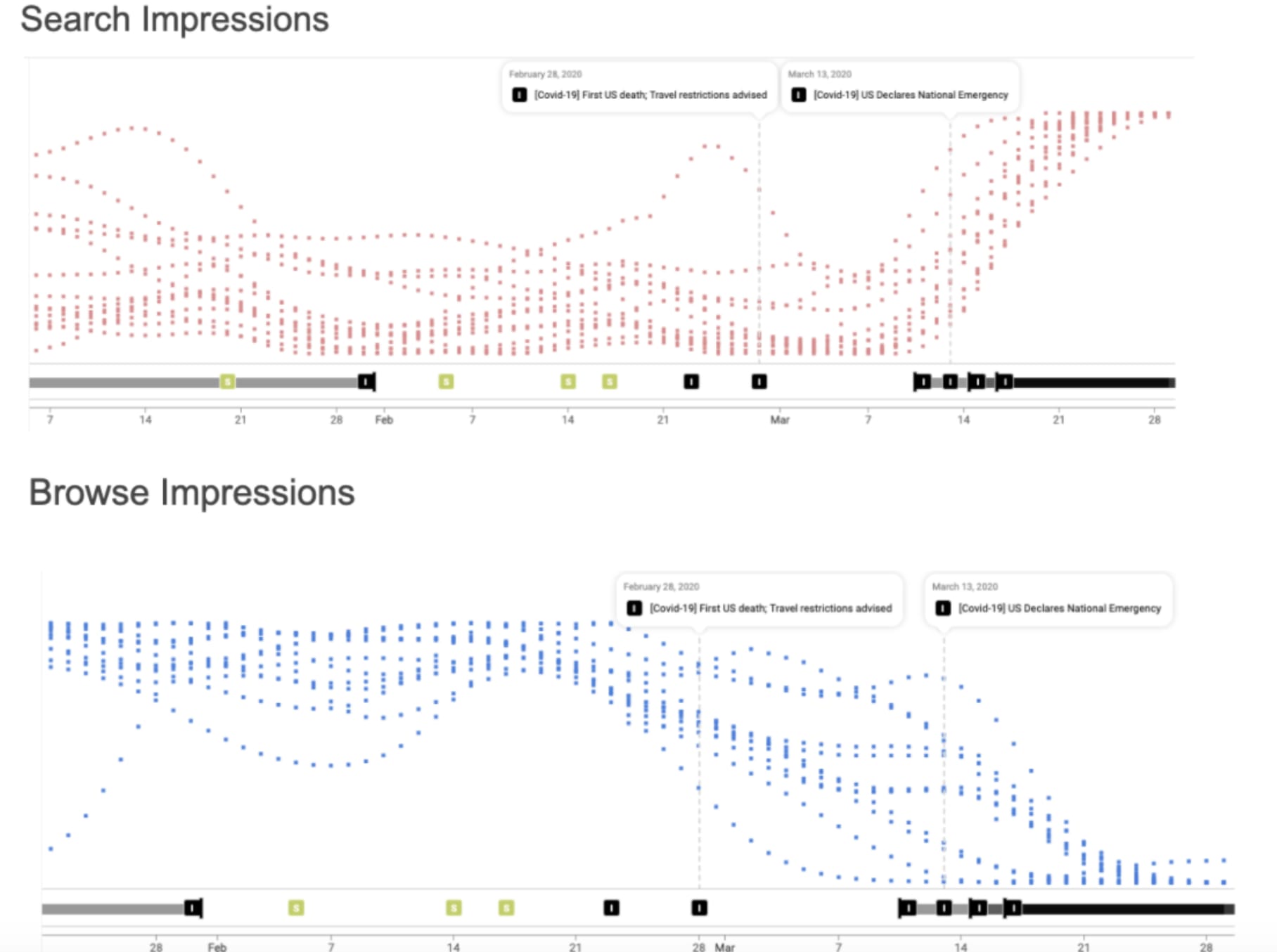We’re living through history and it’s time to start prepping those classic tales for our future grandkids about how we survived behind closed doors binging on Netflix and baking banana bread.
The show must go on
We know humanity we’ll survive. The health situation will eventually recover, The economy’s prospects, however, are a little more up in the air. Much like a rouge sneeze in a supermarket these days.
But we can’t just sit on our hands and wait it out. We need to be proactive and, as marketers, that means always having your finger on the pulse and your feet firmly grounded on reality.
Idioms are great (you might have noticed I’m a big fan) but what does that actually mean? As my yiddishe grandmother might have said, “It’s time to talk tachles.” So let’s get straight to the point then, Bubbe.
As growth marketers in times of unprecedented uncertainty, our job is critical for both making it through the present as well as to ensure we’re in the best possible position for when the recovery rolls around and people are a little more spend-happy. And we do this by starting off with a strong understanding of the holistic impact of growth activities and knowing which metrics to use as indicators of good things as well as the metric changes that should make us go “oh, crap, we need to do something now!”
This allows us to quickly identify any weak spots in our funnels and then allow us to prepare for the day after.
Jonathan Fishman breaks down his own process for ongoing monitoring and how to make the most of the opportunities that present themselves at times like these.
It’s pretty simple actually and it simply lays out the questions to answer and the order to answer them in. Consider it a checklist for monitoring and acting.
The 3-step methodology involves asking the following questions, in order, for each step:
1. Am I experiencing a drop in performance?
2. Where exactly is that drop coming from?
3. What might I do about it?
Step 1: Browse/Explore
As browse traffic represents the audience that gets exposed to featuring and top charts/category rankings, that’s where you need to look. Take note that not all subcategories behave the same way. Rankings rely heavily on new install velocity so changes there can reflect which games are getting the most exposure to new audiences at this time.
Step 2: Search
Impressions and app units/first-time installers are the metrics to look at and if you notice a change, it’s time to go deeper and breakdown the impact of keyword rankings and keyword volumes. Have they changed? Search behaviors change all the time and no more so than now. Have a look at the Search Popularity Score to monitor your branded keywords across GEOs.
Step 3: Audience and Conversion
It’s all about growth mix here. Are new users coming in? Are lapsed users returning now in crisis to a place of comfort and familiarity? The mix will tell you whether you’re expanding into new audiences and if you’re not, now might be the perfect time to do so. There’s also what to do with conversion rates, messaging and scoping out the competition. You can read more on that yourself.
Knowing where to look and what to keep your eye on often half the battle in our days of data-overload. A systematic method for regular and thorough monitoring means you are always aware of all the moving parts so you can notice any changes quickly and act promptly.
Agility is now, and always will be, our saving grace.
Corona plays games
Wondering how the Coronavirus pandemic is affecting people’s engagement with social gaming apps? So were we. So we pulled the data and had a look.
The first thing we noticed was that browse traffic and search traffic showed an inverse trend, with browse impressions decreasing by 15-30% and search increasing by 20-30%.

Apparently, heightened boredom increases intent, who’da thought? Casual browsers have become searchers. Maybe more time on our hands has made us more interested in not just wasting that time but filing it.
I need news updates.
I want a fitness tracker.
I need something to help me budget.
I want to play a game.
Etc. Etc.
We’re not scrolling through any top charts while waiting for the bus, we’re searching for the best game to play right now in our sweats on the couch.
We need to shift our focus to search to get the eyes we’re looking for in the next few weeks. So optimizing search rankings and leveraging search ads to build brand awareness seems to be the order of the day.
(Have you noticed any change in the time between install and engagement? I have a hunch it’s shortened. Let me know if I’m right. And in the rare case that I’m not, I’d love to hear your theories on what could be the cause.)
Go bust before the boom
As the economic bust of the pandemic takes effect, advertisers are pulling out of the ad market. And as Economics 101 would remind us, a decrease in demand will cause a decrease in price. And so ads are hella cheap right now. They dropped around 20-25% between February and March.
Logically, the businesses and industries that are hurting the most right now (travel, hospitality and sports) are the ones who’ve been pulling their ad spend. Travel ad spending came to a crushing almost-zero while sports and entertainment saw a 20% decrease in digital ad spend.
This leaves the million-dollar question, should we be taking advantage of these deals?
When it comes to mobile businesses if you have the right value proposition and connect well with users during this time it might be worth investing in growing your audience and market share now and switch focus to monitization when we start to see a light on the horizon. (But I might be biased. Time will tell.)
Decisions, decisions.












